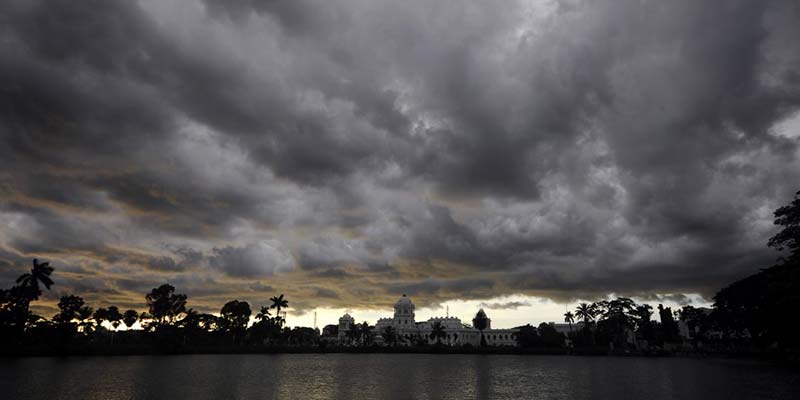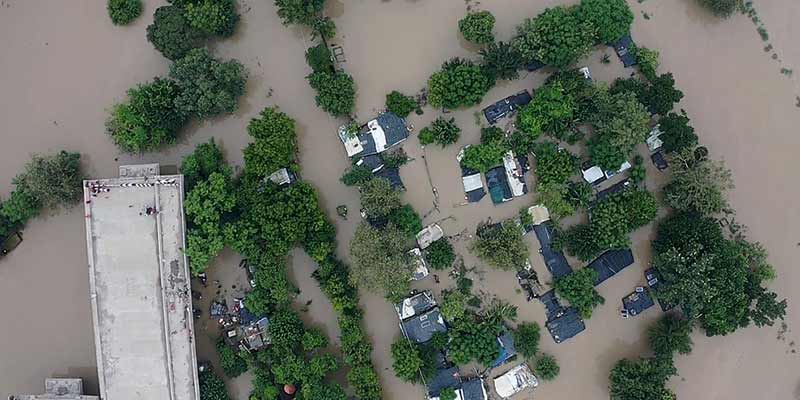- India
- Jan 16
Explainer - What is the role of IMD?
• The India Meteorological Department (IMD) kick-started its 150th anniversary celebrations on January 15.
• Vice President Jagdeep Dhankhar unveiled new initiatives such as the Panchayat Mausam Seva, Decision Support System and the National Framework for Climate Services.
• The Vice President said the IMD’s impact transcended mere weather forecasts and has emerged as a safety net, protecting national interests and shielding citizens from the wrath of nature.
• Panchayat Mausam Seva aims to give weather forecasts to every farmer in every village. Through this portal, weather forecasts in English, Hindi and 12 regional languages will be provided to every panchayat head and panchayat secretary to reach every village of the country. This initiative will enrich every farmer of the country with weather alerts, warnings, medium range weather forecast to help them in planning the agricultural activities
• IMD has developed a GIS-based integrated Decision Support System (DSS) known as the Weather Analysis and Forecast Enabling System (WAFES). It serves as a visualisation platform to analyse meteorological observations and prediction models, aiding decision-making for severe weather phenomena and their socio-economic impact.
• IMD introduced ‘mausam gram’, through its mobile app Mausam. It allows the public to view observations, forecasts, and warnings for their location through a map or search function using place names, pincodes, or coordinates. Forecasts and warnings are disseminated in text and graphics format this mobile app.
• It also rolled out the National Framework for Climate Services to mainstream climate information in every sector and activity.
Establishment of IMD
• India had some of the oldest meteorological observatories of the world and the first astronomical and meteorological unit started at Madras in 1793.
• A disastrous tropical cyclone struck Calcutta in 1864 and this was followed by famine in 1866 and 1871.
• In 1875, the India Meteorological Department (IMD) was established with its headquarters in Calcutta, bringing all meteorological work in the country under a central authority.
• The headquarters was shifted to Shimla in 1905, to Pune in 1928 and then to Delhi in 1944.
• It is the national meteorological service of the country and the principal government agency for all weather and climate services.
The growth of IMD
• From a modest beginning in 1875, IMD has progressively expanded its infrastructure for meteorological observations, communications, forecasting and weather services.
• In the telegraph age, it made extensive use of weather telegrams for collecting observational data and sending warnings. Later, IMD became the first organisation in India to have a message switching computer for supporting its global data exchange.
• One of the first few electronic computers introduced in the country was provided to IMD for scientific applications in meteorology.
• India was the first developing country in the world to have its own geostationary satellite — INSAT — for continuous weather monitoring of this part of the globe and particularly for cyclone warning.
• IMD boasts of 39 Doppler Weather Radars for better observation and prediction of extreme events across the country by 2023, along with INSAT 3D/3DR dedicated weather satellites providing every 15 minutes cloud imagery. About 200 Agro-Automated Weather Station (AgroAWS), 806 Automatic weather stations, 1,382 automatic rain gauges, 83 lightning sensors along with 63 pilot balloon upper air observation stations serve as the backbone of weather observation services of IMD throughout the country.
• Since its establishment, the IMD has served the cause of safety and well-being of people against weather related hazards and helped in the economic development of the country.
• It is one of the few departments of the government whose services touch almost every aspect of life and across all sectors of economy.
• It functions under the ministry of earth sciences (MoES) with its headquarters at Mausam Bhawan in New Delhi.
• IMD houses advanced meteorological instruments, state-of-the-art computing platforms, weather and climate prediction models, information processing and forecasting system and warning dissemination system.
• The Director General of meteorology is the head of the IMD.
• IMD works in a coordinated manner with headquarters at Delhi and six Regional Meteorological Centers (RMCs) catering to six different regions of the country. These RMCs are further assisted by 26 Meteorological Centers (MCs) at state level that are specialised for observing and disseminating information, advisories and warnings about regional weather.
• The different dedicated divisions in IMD headquarters like National Weather Forecasting Center (NWFC), Numerical Weather Prediction (NWP), Satellite Meteorology Division, Upper Air Instrument Division, Hydrology division and Information System & Services Division (ISSD) and Climate Research & Services Division of IMD Pune support the overall forecasting, monitoring and dissemination services of IMD.
• IMD is not only catering to the Indian region but also provides cyclone forecast and warning services to 13 north Indian Ocean countries along with forecast and warning services to SAARC nations.
Objectives if IMD:
• To take meteorological observations and to provide current and forecast meteorological information for optimum operation of weather-sensitive activities like agriculture, irrigation, shipping, aviation, offshore oil explorations, etc.
• To warn against severe weather phenomena like tropical cyclones, norwesters, dust storms, heavy rains and snow, cold and heat waves, etc, which cause destruction of life and property.
• To provide meteorological statistics required for agriculture, water resource management, industries, oil exploration and other nation-building activities.
• To conduct and promote research in meteorology and allied disciplines.
• To detect and locate earthquakes and to evaluate seismicity in different parts of the country for development projects.
Manorama Yearbook app is now available on Google Play Store and iOS App Store



